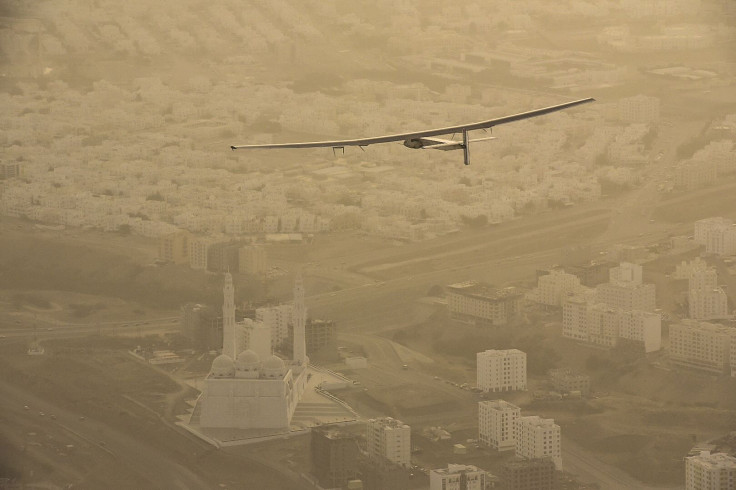'Solar Impulse 2' Closing In On Hawaii After Breaking Solo Flight Record

Solar Impulse 2, a solar-powered Swiss aircraft, has broken the world record for the longest solo flight across the globe. The plane, the brainchild of Swiss scientists Andre Borschberg and Bertrand Piccard, has now spent over 100 hours in the air, as it closes in on Hawaii, according to media reports.
The previous record for the longest solo endurance flight was held by American entrepreneur Steve Fossett, who flew for 76 hours and 45 minutes in 2006.
“Always feels good to break records, but it is not the goal of Solar Impulse,” Borschberg, who is currently piloting the aircraft, tweeted, adding that the aim of the grueling “round-the-world” mission is “to demonstrate that clean technologies can really change the world.”
The aircraft is now on its riskiest leg of the entire journey -- a trans-Pacific voyage from the city of Nagoya in Japan to Hawaii. It is expected to land in the U.S. state early on Friday.
“This flight is demanding and challenging, particularly given its duration -- 120 hours on solar power only,” the organizers said, in a statement published on their website. Borschberg, who has now spent more than four days inside the unpressurized cockpit, has taken 20-minute naps during the journey while the aircraft flies on autopilot.
While the plane was originally scheduled to fly directly from Nanjing in China to Hawaii, bad weather along the way forced it to divert to Japan, where it had to stop for a month. Its final destination is Abu Dhabi, where it began its journey in March.
On that particular leg of the flight, which will begin in Arizona -- Borschberg and Piccard will fly together across the Atlantic.
The stated aim of this first-of-a-kind journey is to create awareness about “clean and efficient technologies." Solar Impulse 2 -- a lightweight version of the prototype Solar Impulse 1 aircraft that was first tested in 2009 -- is made entirely of carbon fiber and has a 236-foot wingspan, which is longer than that of a Boeing 747.
The aircraft's sole power source is an array of 17,000 solar cells that allows it to travel at an average speed of just over 43 mph. The cells are also used to recharge the lithium-ion batteries the plane uses to sustain night-time flight.
© Copyright IBTimes 2024. All rights reserved.






















